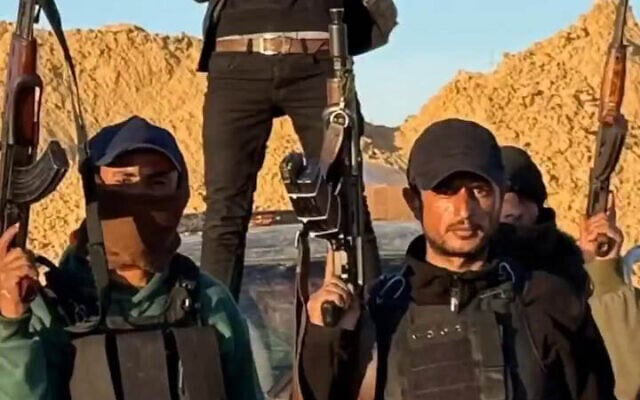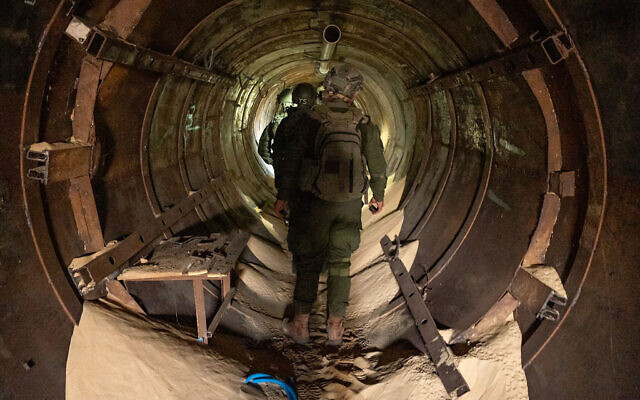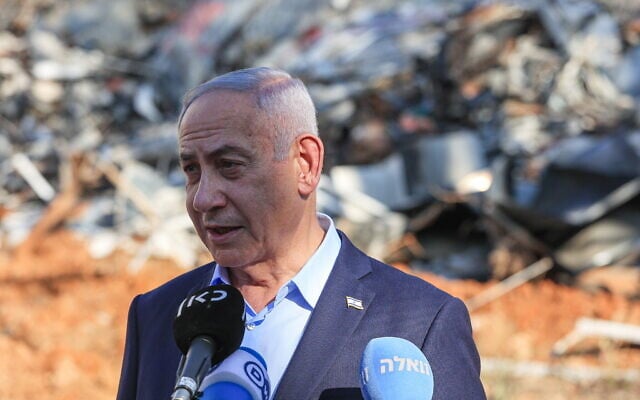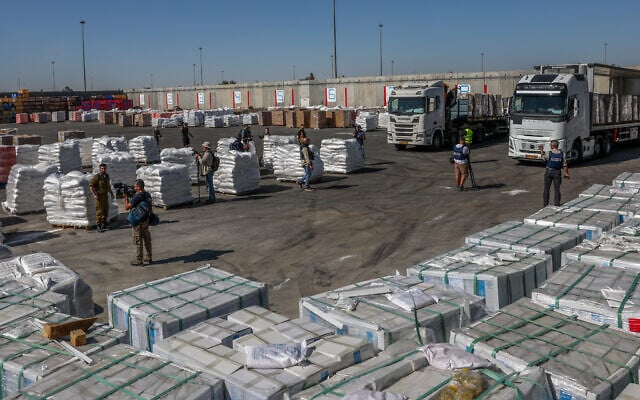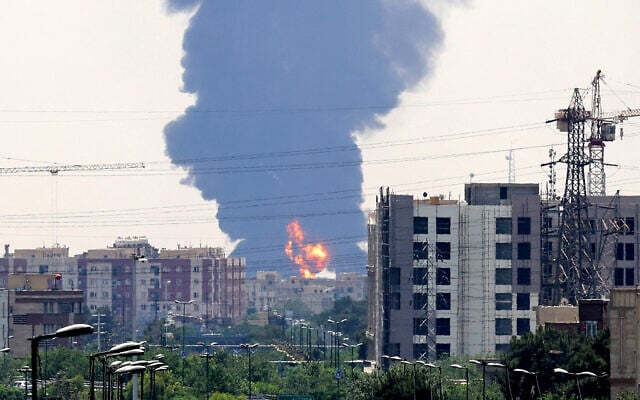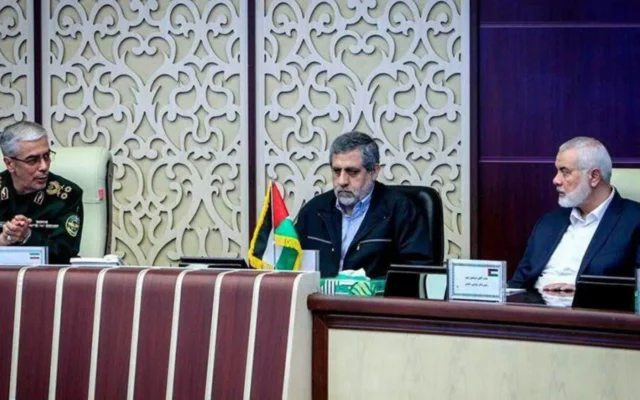


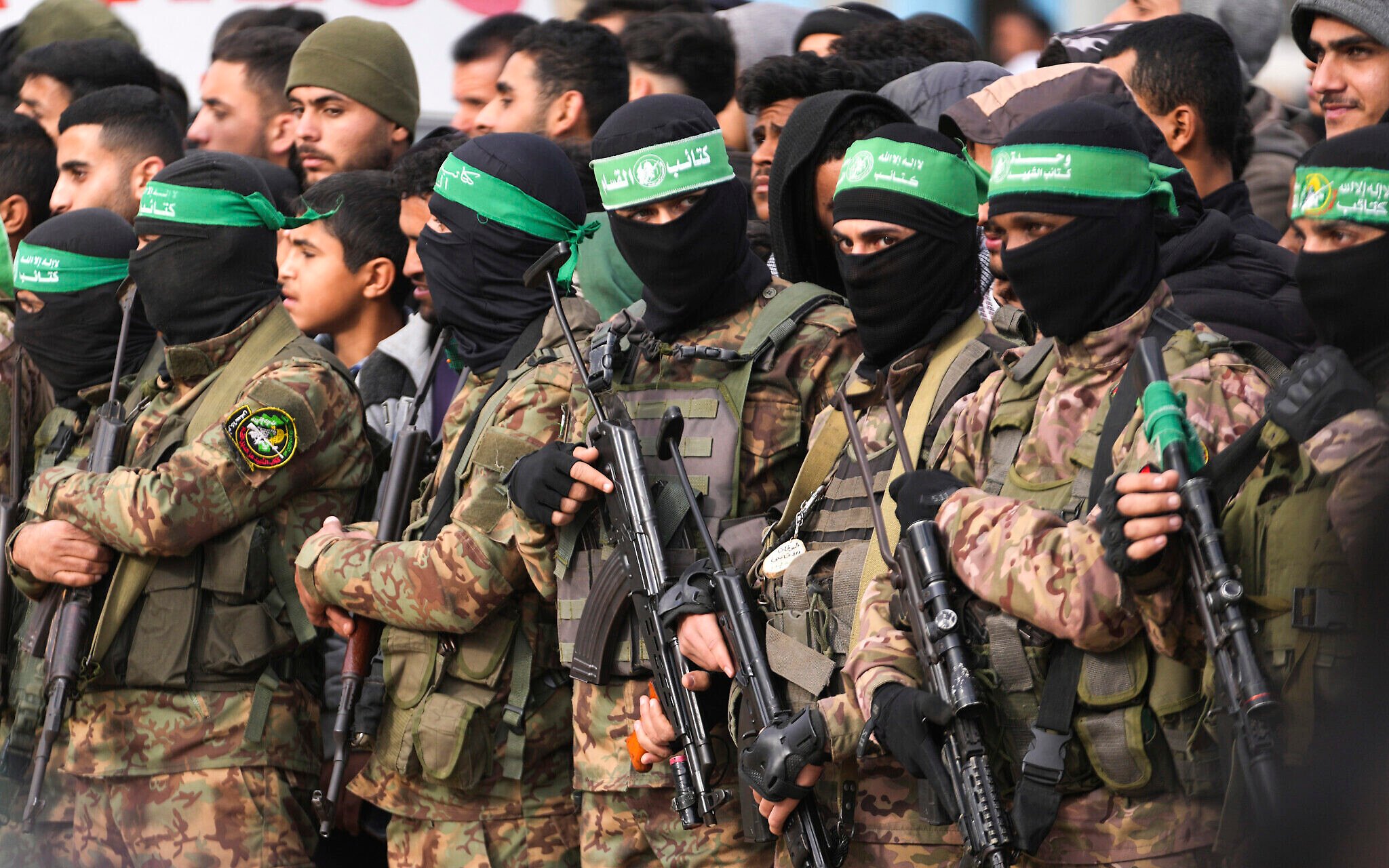
Short of commanders, deprived of much of its tunnel network and unsure of support from its ally Iran, Hamas is battling to survive in Gaza in the face of rebellious local clans and relentless Israeli military pressure.
Hamas gunmen are operating autonomously under orders to hold out as long as possible, but the terror group is struggling to maintain its grip as Israel openly backs tribes opposing it, three sources close to Hamas said.
With a humanitarian crisis in Gaza intensifying international pressure for a ceasefire, Hamas badly needs a pause in the fighting, one of the people said.
Not only would a ceasefire offer respite to weary Gazans, who are growing increasingly critical of Hamas, but it would also allow the terror group to crush rogue elements, including some clans and looters who have been stealing aid, the person said.
To counter the immediate threat, Hamas has sent some of its top operatives to kill one rebellious leader, Yasser Abu Shabab, but so far he has remained beyond their reach in the Rafah area held by Israeli troops, according to two Hamas sources and two other sources familiar with the situation.
Reuters spoke to 16 sources, including people close to Hamas, Israeli security sources and diplomats who painted a picture of a severely weakened group, retaining some sway and operational capacity in Gaza despite its setbacks, but facing stiff challenges.
Hamas is still capable of landing blows: it killed seven Israeli soldiers in an attack in southern Gaza on Tuesday. But three diplomats in the Middle East said intelligence assessments showed it had lost its centralized command and control and was reduced to limited, surprise attacks.
Israel estimates that it has killed 20,000 gunmen in Gaza since the war there was sparked on October 7, 2023, when thousands of Hamas-led terrorists stormed southern Israel to kill some 1,200 people and take 251 hostages. Another 1,600 terrorists are thought to have been killed inside Israel during the onslaught.
Israeli security sources say Hamas is recruiting tens of thousands of thousands of impoverished, unemployed, displaced young men. One Israeli security source said the average age of Hamas gunmen was “getting lower by the day.”
Hamas does not disclose how many of its operatives have been killed. According to the terror group’s health ministry, Israel has killed more than 56,000 Gazans in the war, but the figure cannot be verified and does not distinguish between civilians and combatants.
The war has turned much of Gaza into rubble, and destroyed or rendered unusable hundreds of miles of tunnels that Hamas dug underneath the Strip to hold hostages, smuggle arms and hide from Israeli forces.
“They’re hiding because they are being instantly hit by planes but they appear here and there, organizing queues in front of bakeries, protecting aid trucks, or punishing criminals,” said Essam, 57 a construction worker in Gaza City. “They’re not like before the war, but they exist.”
Asked for comment for this story, senior Hamas official Sami Abu Zuhri said the group was working for an agreement to end the war with Israel, but “surrender is not an option.”
Hamas remained committed to negotiations and was “ready to release all prisoners at once,” he said, referring to the hostages, but it wanted a permanent ceasefire and for Israel to withdraw from the Strip. Prime Minister Benjamin Netanyahu has publicly rejected those conditions and vowed to keep fighting until Hamas is vanquished.
With a US-brokered truce in the Iran-Israel war holding, attention has switched back to the possibility of a Gaza deal that might end the conflict and release the 50 remaining hostages.
One of the people close to Hamas told Reuters it would welcome a truce, even for a couple of months, to confront the local clans that are gaining influence.
But he said Netanyahu’s terms for ending the war — including Hamas leaders leaving Gaza — would amount to total defeat, and Hamas would never surrender. “We keep the faith, but in reality, it doesn’t look good,” the source said.
Founded in 1987, Hamas has ruled Gaza with an iron fist since it violently ousted forces loyal to Palestinian Authority President Mahmoud Abbas, head of the secularist Fatah faction, the Islamist Hamas’s main rival.
Israel has inflicted unprecedented damage on Hamas since the October 7 onslaught, killing most of the terror group’s top commanders, including its leader, Yahya Sinwar, in October.
Yezid Sayigh, a senior fellow at the Carnegie Middle East Center in Beirut, said he believed Hamas was simply trying to survive. That was not just a physical challenge of holding out militarily, he said, but above all a political one.
“They face being eliminated on the ground in Gaza if the war doesn’t stop, but they also face being erased from any governing formula that ends the war in Gaza [if such a thing can be found],” he wrote in response to Reuters’ questions.
Palestinian tribes have emerged as part of Israel’s strategy to counter Hamas. Netanyahu has said publicly that Israel has been arming clans that oppose Hamas, but has not said which.
One of the most prominent challenges has come from Abu Shabab, a Palestinian Bedouin based in the Rafah area, which is under IDF control.
Hamas wants Abu Shabab captured, dead or alive, accusing him of collaboration with Israel and planning attacks on the terror group, three Hamas sources told Reuters.
Abu Shabab controls eastern Rafah and his group is believed to have freedom of movement in the wider Rafah area.
Images on Abu Shabab’s Facebook page show the group’s gunmen organizing the entry of aid trucks from the Kerem Shalom crossing. Israel has accused Hamas of hijacking aid deliveries, hoarding supplies and selling them at exorbitant prices.
Announcements by Abu Shabab’s group indicate that it is trying to build an independent administration in the area, though the group denies trying to become a governing authority. The group has called on people from Rafah who are now in other areas of Gaza to return, promising food and shelter.
In response to Reuters’ questions, Abu Shabab’s group denied getting support from Israel or contacts with the Israeli army, describing itself as a popular force protecting humanitarian aid from looting by escorting aid trucks. It accused Hamas of violence and muzzling dissent.
A Hamas security official said the Palestinian security services would “strike with an iron fist to uproot the gangs of the collaborator Yasser Abu Shabab,” saying Hamas would show no mercy or hesitation and accusing Abu Shabab of being part of “an effort to create chaos and lawlessness.”
Not all of Gaza’s clans are at odds with Hamas, however.
On Thursday, a tribal alliance said its men had protected aid trucks from looters in northern Gaza. Sources close to Hamas said the group had approved of the alliance’s involvement.
Israel said Hamas gunmen had in fact commandeered the trucks, which both the clans and the terror group denied.
Palestinian analyst Akram Attallah said the emergence of Abu Shabab was a result of the weakness of Hamas, though he expected him to fail ultimately because Palestinians broadly reject any hint of collaboration with Israel.
Nevertheless, regardless of how small Abu Shabab’s group is, the fact that Hamas has an enemy from the same culture was dangerous, he said. “It remains a threat until it is dealt with.”
The IDF’s 12-day bombing campaign against Iran, which began early on June 13, has added to the uncertainties facing Hamas. Tehran’s backing for Hamas played a big part in the terror group’s ability to shoot missiles deep into Israel.
According to Israel, the sweeping assault on Iran’s top military leaders, nuclear scientists, uranium enrichment sites, and ballistic missile program was necessary to prevent the Islamic Republic from realizing its avowed plan to destroy the Jewish state.
Iran retaliated by firing drones and deadly ballistic missile attacks at Israel, causing heavy damage.
While both Iran and Israel have claimed victory, Netanyahu on Sunday indicated the Israeli campaign against Tehran had further strengthened his hand in Gaza, saying it would “help us expedite our victory and the release of all our hostages.”
US President Donald Trump said on Wednesday that great progress was being made on Gaza, adding that the strike on Iran would help get the hostages released.
A Palestinian official close to Hamas said the group was weighing the risk of diminished Iranian backing, anticipating “the impact will be on the shape of funding and the expertise Iran used to give to the resistance and Hamas.”
One target of Israel’s campaign in Iran was a Revolutionary Guards officer who oversaw coordination with Hamas, which is part of the so-called Axis of Resistance, a regional network of Iran-backed terror proxies that also includes Lebanon’s Hamas and Yemen’s Houthi rebels.
Israel announced the death of the general, Saeed Izadi, on Saturday, saying he had been the driving force behind the Iran-Hamas axis and instrumental in planning the October 7 onslaught.
Hamas extended condolences to Iran on Thursday, calling Izadi a friend who was directly responsible for ties with “the leadership of the Palestinian resistance.”
A source from an Iran-backed group in the region said Izadi helped develop Hamas capabilities, including how to carry out complex attacks, including rocket launches, infiltration operations, and drones.
Asked about how the Israeli campaign against Iran might affect its support for Hamas, Abu Zuhri said Iran was a large and powerful country that would not be defeated.

